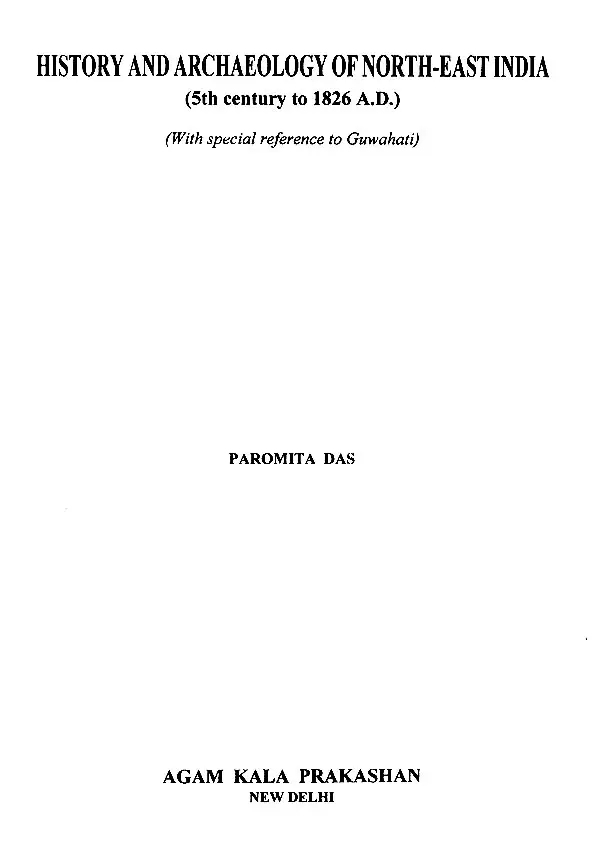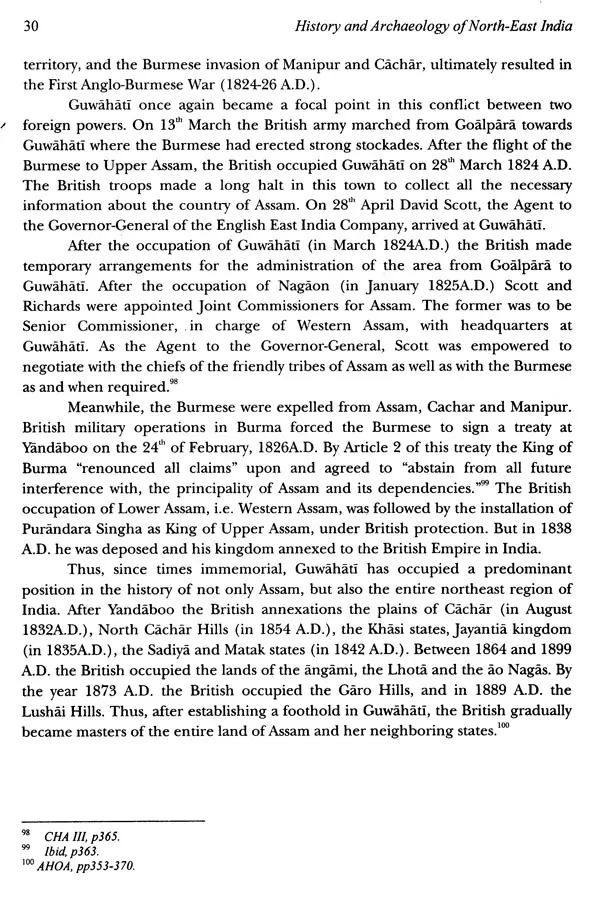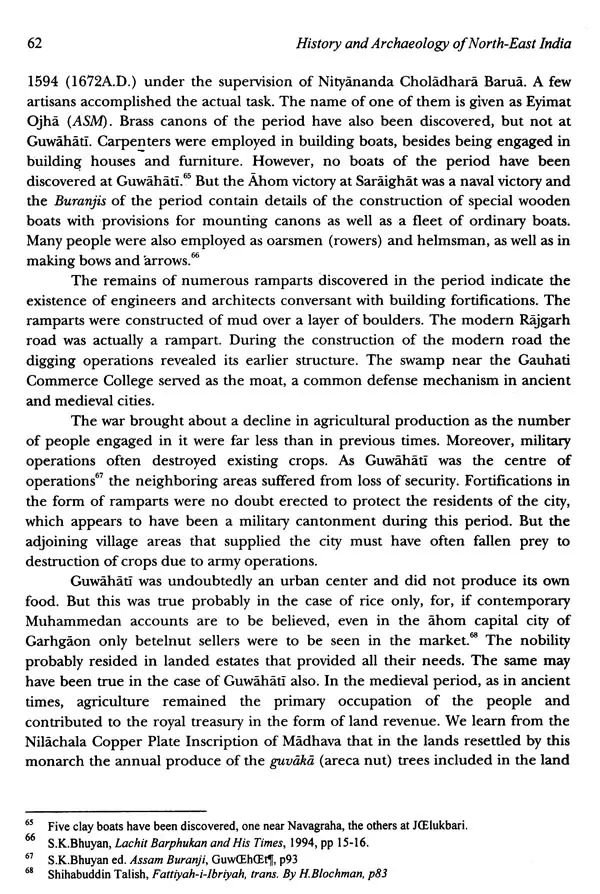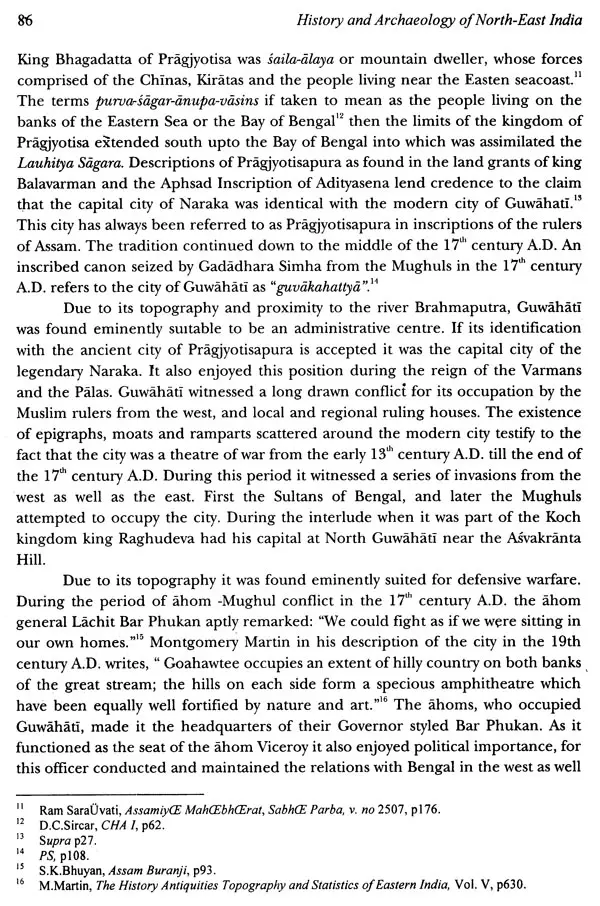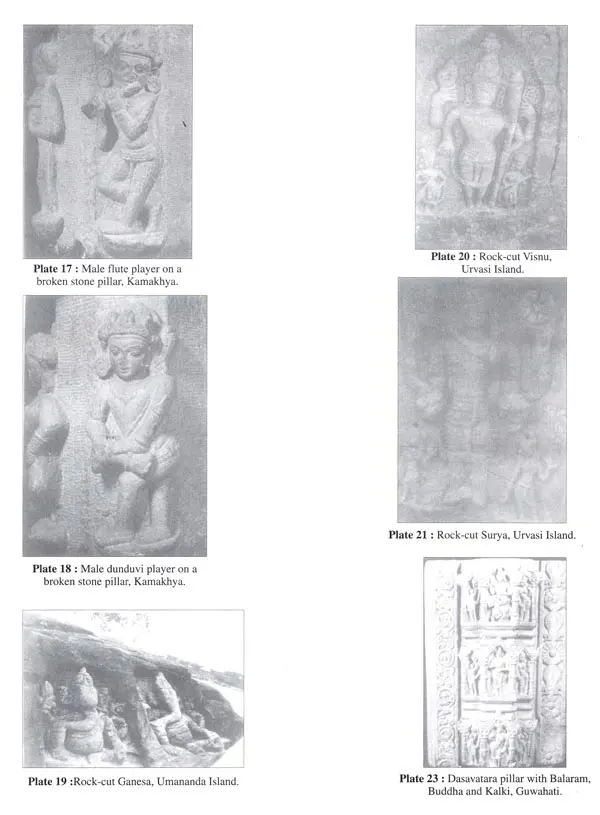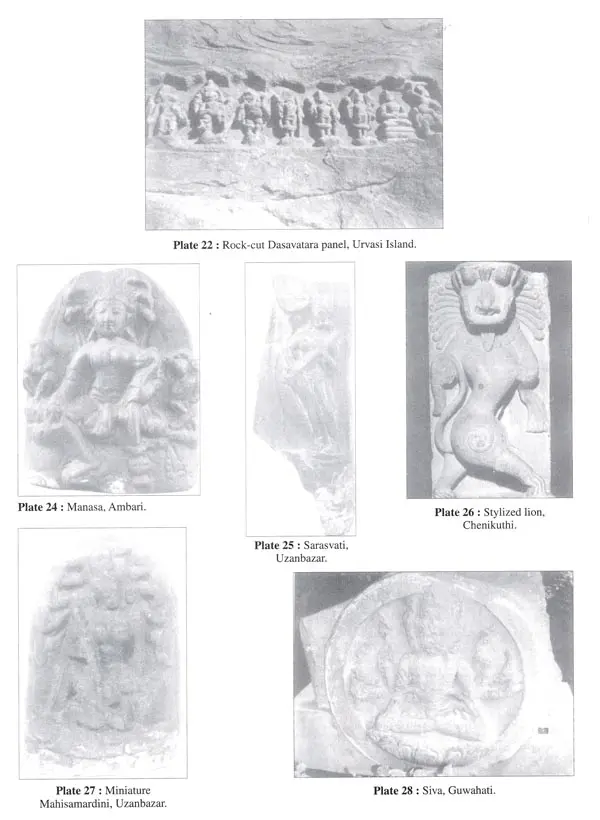
History and Archaeology of North-East India
Book Specification
| Item Code: | UAN362 |
| Author: | Paromita Das |
| Publisher: | Agam Kala Prakashan, Delhi |
| Language: | English |
| Edition: | 2007 |
| ISBN: | 8173200718 |
| Pages: | 174 (Throughout B/w Illustrations) |
| Cover: | HARDCOVER |
| Other Details | 11.00 X 9.00 inch |
| Weight | 760 gm |
Book Description
This book is an exhaustive study of the archaeological remains of the modern city of Guwahati from the 5 century A.D. to the end of the pre-colonial period in Assam. It focuses primarily on the different aspects of the history of the city. its religious and economic life, its society and polity. The history of the city is traced based primarily on its material remains, inscriptions, coins and sculpture.
The history of Guwahati is intricately linked with the forces that shaped the history of Assam. Even today the city is the gateway to North East India. The author has lucidly brought out the important position occupied by the city in the history of Assam. Known earlier as Pragjyotisapura, it was the capital of the legendary Naraka, credited with the construction of the (original) famous Kamakhya temple. His son Bhagadatta played a prominent part in the Kurukshetra battlefield. It was also the seat of power of Bhaskarvarman, the friend of Harsavardhana, whom the celebrated Chinese pilgrim Hieun Tsang calls a great patron of learning. It was the seat of the Bar Phukan or Viceroy of Lower Assam during the Ahom period and was the arena of great battles during the conflict with the Mughuls. After British occupation it was the headquarters of the Chief Commissioner of Assam Province. And it is in Guwahati that the modern government has its seat of power at Dispur. This book is the first of its kind in that it depends primarily on archaeological remains to reconstruct different aspects of the history of Guwahati and it is believed that students of history will benefit immensely from it.
Dr. Paromita Das is currently Reader at the Department of History, Gauhati University, Guwahati, Assam where she has been teaching Ancient Indian History and also the history of Ancient Assam, since 1997. Earlier she served for four years as a Lecturer in Ancient India, in Arya Vidyapeeth College, Guwahati. She did her schooling from Carmel School, Digboi, graduated in History Major in the First Class with Distinction from Cotton College, Guwahati, obtained her Masters degree in the First Class with specialization in Ancient Indian History from Gauhati University and Ph.D. in History from the same. university in 2003.
Several of her research papers have been published in reputed national academic journals and she has presented many research papers in various forums. Dr. Das has co-authored three text books of the Board of Secondary Education, Assam, for classes VIII to X. Her major areas of interest are art history and archaeology.
This work is an attempt to reconstruct different aspects of the history of Guwahati as revealed by its material remains. The urge to take up the work was prompted by the fact that hitherto no one had attempted to trace the history of this ancient settlement. As a resident of the city, its past was constantly unfolding by the discovery of surface finds. Systematic excavations by the Directorate of Archaeology and the presence of numerous inscriptions and ruins reinforce local legends that identify Guwahati with ancient Pragjyotispur. This book forms my doctoral thesis entitled "A Study of the Archaeological Remains in the modern city of Guwahati". As it is basically a history of the city based of archaeological sources I have named the present work "History and Archaeology of Guwahati". I am greatly indebted to my guide Dr. JN. Phukan, retired Professor and Head of the Department of History, Gauhati University for his guidance in writing the thesis. I am especially grateful to Dr. Pradip Sarma for helping me with my field study. I am also indebted to Dr. Gunin Bhuyan, retired Director of the Directorate of Archaeology, Assam and Dr. R.D. Choudhury, Retired Director General of the National Museum, New Delhi and formerly Director of the Assam State Museum, for allowing me to use their departmental libraries. I also wish to thank the concerned authorities for allowing me to use the libraries of the Kamarupa Anusandhan Samiti and the Department of Historical and Antiquarian Studies. I am also indebted to Dr. N.P.Choudhury, Sri R.C. Das, Dr. H.N. Dutta, Ms. Deepi Rekha Kouli, Sri Sarat Goswami and others in the Directorate of Archaeology and Directorate of Museums, Assam, for their co-operation and assistance. I am also grateful to my departmental colleagues for their valuable suggestions. Last but not the least I acknowledge the support of my husband Dr. Neil Utpal Das and my daughters Jayati Das and Joyee Das without whose active co-operation this work could not have been completed.
The City of Guwahati
Topography and Soil
The modern city of Guwahati in Assam stands on the bank of the Brahmaputra River. Guwahati situated at 91"8"E and 26°2"N' lies in the lower Assam valley of the Brahmaputra. The subdivision of Guwahati in the district of Kamrup covers an area of 4,625 sq.km. The isolated crops of hills, which break the plains, are actually the outlying portions of the Shillong Plateau, and consist of gneiss and granite. The latter is said to be a continuation of the ancient Gondwänä land, of the Chotta Nagpur plateau. At the foot of these hills are frequently found, beds of conglomerate. The alluvial materials carried down by the Brahmaputra formed the surrounding plains of Guwahati in the distant past. Its soil consists of sand, sandstone, pebbles, clay, and sometimes, a mixture of clay, sand and vegetable matter. Guwahati has an altitude of only 50 metres. The northern edge of the Shillong Plateau gradually slopes towards the Brahmaputra Valley in a succession of sharp undulating hills and ridges, for about 32 km. In the western part of Guwahati city is the Nilachal Hill on which the famous shrine of Kamakhya stands. To the east of the Nilachal Hill, on the bank of the Brahmaputra are the Sukreśvar Hill and Chaträkar Hill respectively, both crowned by temples. In the heart of the city is the Chitrachal Hill, the Kanvachal Hill and Sarania Hill, the first crowned by the shrine of Navagrahas. In fact, a ring of hills fringes Guwähäti. These are the Käläpähär and the Narakasur Hills on the south, the Jäporigog Hills in the southeast and the Fatäsil Hills in the west, along with the Niachala. Book's Contents and Sample Pages